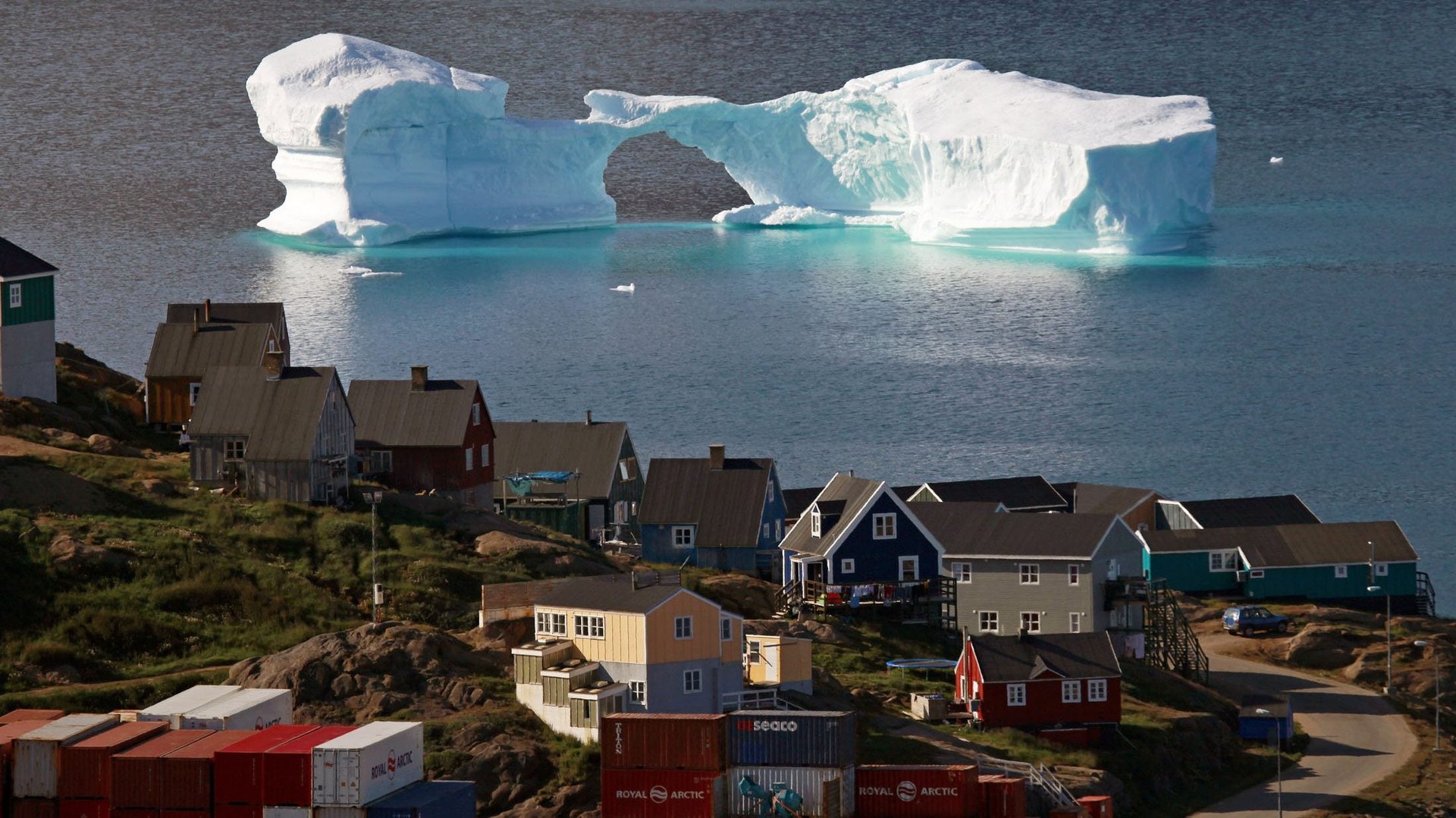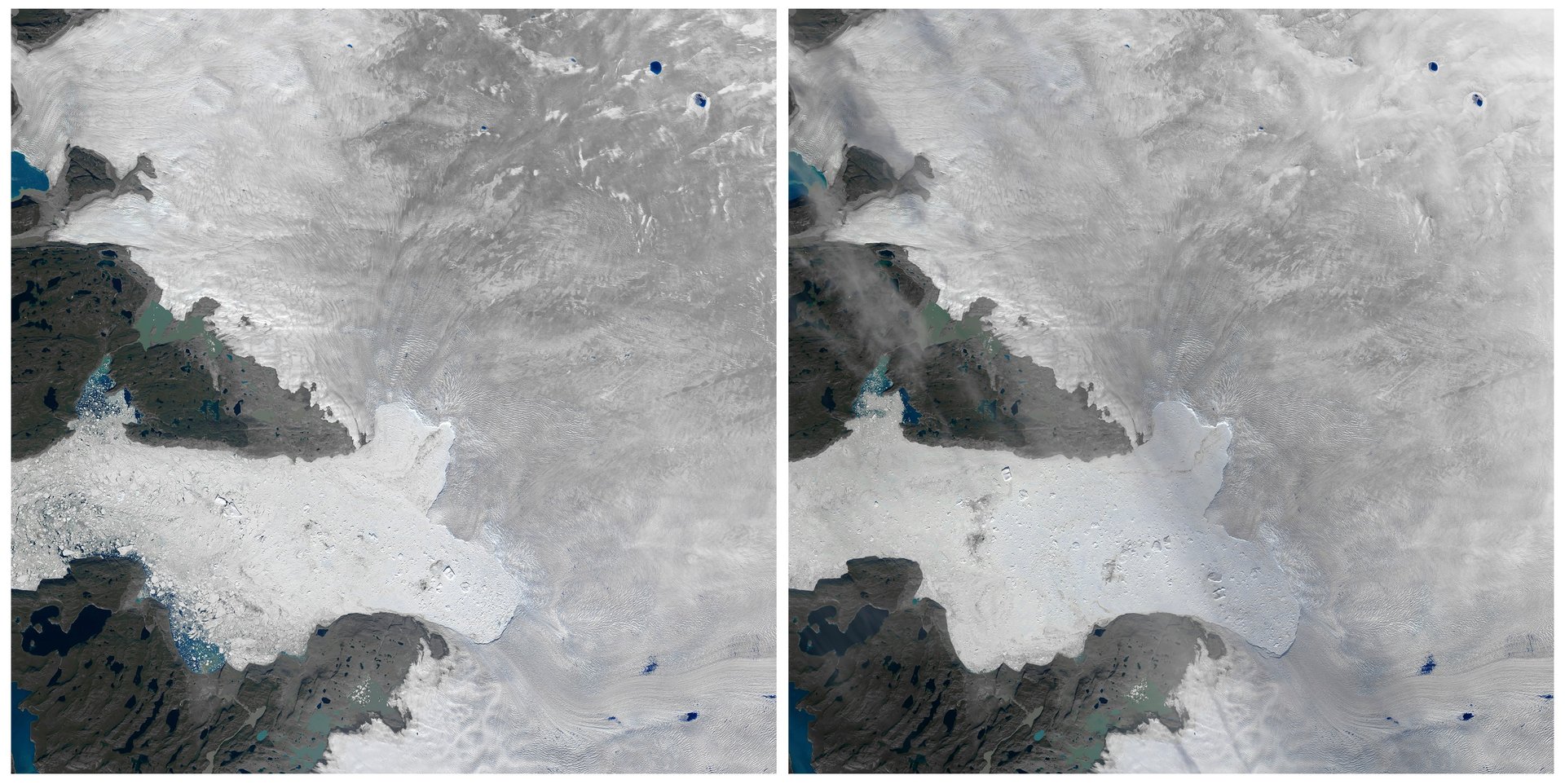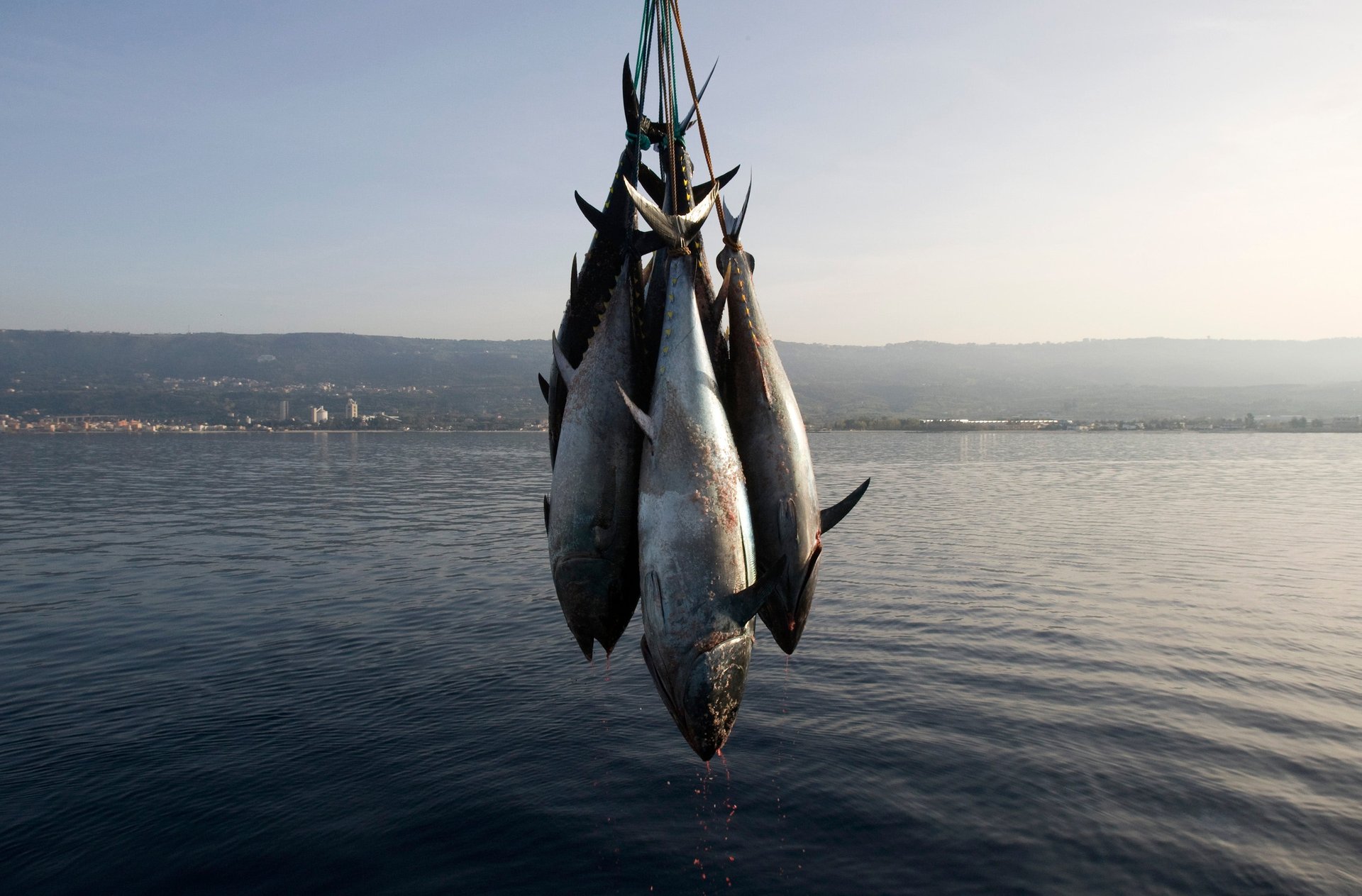Greenland isn’t in a rush to fight climate change because it’s good for the country’s economy
A few dozen kilometers northeast of Nuuk, Greenland’s capital and largest city, a remote power plant is thriving because of the extra water coming from the melt of ancient glaciers.


A few dozen kilometers northeast of Nuuk, Greenland’s capital and largest city, a remote power plant is thriving because of the extra water coming from the melt of ancient glaciers.
The Buksefjord hydroelectric station is the biggest of five built since 1993 in order to disencumber the country from imported oil. Outside the plant, some employees now grow turnips and potatoes on land once too cold for anything but reindeer and lichen, while close to the station, cod, usually only seen much further south, flourish in the pristine water.
As with the rest of the Arctic region, Greenland is warming twice as fast as the global average: Since the early 1950s, the temperature in Greenland has risen by 1.5°C, compared with approximately 0.7°C worldwide.
In large part, this is because of the “albedo effect.” Albedo is a coefficient measuring the ratio of reflected solar radiation to total incoming solar radiation. A high albedo means the surface reflects the majority of the radiation that hits it and absorbs the rest. A low albedo means the opposite. Snow-covered sea ice has a high albedo, reflecting up to 85% of sunlight.
In Greenland, as the area covered by ice and snow shrinks, the albedo is dropping and solar radiation that would have been reflected is now soaked up by open water instead, further warming it up. Heat from the warmer sea is released back into the air, raising atmospheric temperatures too. In turn, this melts more ice, in a loop that fuels itself. A recent study in the journal Geophysical Research Letters used satellite imagery to calculate that Greenland lost a bewildering one trillion tons of ice between 2011 and 2014. This year, melt season began so early that many scientists couldn’t believe the data they were looking at.
According to the International Panel on Climate Change, besides causing irreparable environmental damage, climate change will also harm economies in almost all parts of the world and worsen already challenging situations by prompting more frequent and more disastrous floods, droughts, and heat waves. Low-lying tropical states such as Tuvalu and the Maldives view Greenland’s 10,000-foot-thick ice sheet with dread: if it ever all melts, it would raise global sea level by about six meters.
Yet, paradoxically, no nation in the world will profit from climate change as much as the one at ground zero of it.
The winners and losers
Nearly 75% of Greenland is covered by the only permanent ice sheet outside of Antarctica, so it’s fairly obvious that warming temperatures would be a big deal there. “It’s no secret that climate change poses a challenge to the Greenlandic society,” says Mala Høy Kúko, the country’s minister for nature, energy, and environment.
Although it’s difficult to foresee the full impact of the great melt in the long run, some effects can already be seen. According to Kúko, the melting permafrost is endangering the construction and maintenance of some airports and other infrastructure. Greenland’s largest commercial airport, for example, is located in Kangerlussuaq, a zone of continuous permafrost melting in western Greenland.
The loss of ice is also hurting indigenous hunters whose livelihoods largely depend on the existence of permafrost, although, says Kúko, “no one has been forced—or is expected—to move away from his own settlement anytime soon.” Overall, the area of Arctic land covered by snow in early summer has shrunk by 25% since 1966. Several climate models predict that the Arctic Ocean could be ice-free in summers within a century. Others think it will happen sooner. Either way, in recent years, the sea freezes in February and starts to thaw in April, instead of icing over in December and melting in June. At the peak of winter, the ice might be only a foot thick—not nearly enough to support sleds or snowmobiles, cutting into seal and narwhal hunting seasons.
“Not too long ago, the ice thickness wasn’t a concern at all,” said Thomas Løvstrøm, a 66-year-old Inuit from Uummannaq, in northwestern Greenland. “In the 1980s, I could hunt by dogsled on Greenland’s west coast until June.” Some hunters have tried to shoot seals from boats, but this turned out to be a poor substitute for the traditional method because it prevents hunters from stealthily approaching their prey. On a noisy boat, they can’t get as close as on a sled, and shooting from an increased distance dramatically reduces the odds of hitting the target.
This past March, Nuuk hosted the 2016 Arctic Winter Games, an international circumpolar event. The city’s residents were stunned when organizers had to generate artificial snow for the sporting events in a month that is usually generously snowy.

But here’s the rub: the global thaw has the potential to bring Greenland’s tiny population a tremendous windfall.
In 2015, after three years of contraction, there was economic growth in Greenland partly because a range of new opportunities brought by climate changes. Although agriculture isn’t a major part of Greenland’s economy, higher temperatures in the southern region have made growing seasons longer than a decade ago, enabling expanded production of existing crops, like potatoes. Meanwhile, new crops like carrots, cauliflower, cabbage, strawberries, apples, and broccoli can now be grown as the frozen tundra retreats northwards due to an increasingly early Arctic spring, making for more areas suitable for agriculture.
While Greenland’s main export remains cold-water shrimp—locally known as the “pink gold”—in recent years rising temperatures are attracting new types of harvestable fish like the Atlantic Bluefin tuna and mackerel, species pretty much never sighted in the waters off Greenland until 2011.
In 2015, almost 80,000 tons of mackerel were caught; paired with prices that have been steadily rising since 2012, it made for good earnings for companies like Royal Greenland, owned by the government, and Polar Seafood, Greenland’s biggest private company. “Of course climate change is bad,” says Henrik Leth, chairman of Polar Seafood and leader of the Greenland Business Association. “But, alas, I can’t say it isn’t good overall for Greenland.”

Warmer temperatures are also helping the country bring back the Greenland cod, a pivotal species whose total disappearance in the early 1990s was caused by overfishing and a four degree Celsius drop in the water temperature—and which deeply affected the country’s economy. Now that the seas around Greenland are at the highest temperatures since 1960s, cod are making their way back home, and some Greenlanders are reaping the rewards. For example, Kim Hoegh-Dam, who runs the Qaqortoq-based firm Arctic Prime Production, spent $1 million on a small fleet of cod trawlers and three processing plants 10 years ago. “It was clear warming temperatures would have brought cod and other species up from the south,” he says. Arctic Prime now exports its marine products worldwide.
A new Klondike?
The opportunities brought by climate change may finally give Greenland full independence from Denmark, Greenland’s former colonial master. Although Greenland gained officially self-rule in 2009, Denmark still plays a key role in the island’s economy. The Scandinavian country upholds an annual block grant of 3.2 billion Danish kroner—roughly $580 million—that accounts for a quarter of the island’s gross domestic product. When Greenland achieves economic independence, the grant will subside, and so will Denmark’s influence on the North Atlantic island.
According to prime minister Kim Nielsen, the key will be diversification: Despite being the largest island in the world, Greenland has a population of just 56,000 and its economy is based almost entirely on the fishing industry, which accounts for 90% of its exports. Lingering dependence on exports of fish, however, makes the economy of the state sensitive to foreign developments and to Denmark’s largesse.
Over the last few years, the global thaw has made it clear that Greenland has on- and offshore mineral wealth that could change the game for the country’s economy. The island has resources ranging from iron, zinc, uranium, and rare-earth elements buried underground to hydrocarbon assets off its western coast and the potential for oil and gas fields in the northern and northeastern regions.
Melting ice has made all this more accessible by improving access to locations and facilitating prospecting operations, fuelling the hopes of developing a fully-fledged mining industry. “It will be cheaper for companies to get out minerals,” says Ole Geertz-Hansen, a senior scientist at the Greenland Institute of Natural Resource.
Extraction of raw materials offers the most realistic opportunity to expand Greenlandic business sector. That’s why the country is seeking a territorial opt-out from the Paris climate deal, agreed by nearly 200 countries in December 2015.
“Our current economic situation leaves no option,” says Vittus Qujaukitsoq, the administration’s foreign minister. Under the previous Kyoto climate agreement, Greenland had an emission quota of 650,000 metric tons of carbon dioxide a year—less than is emitted by a single coal-fired power station. To develop mining and oil would raise its emissions per capita to some of the highest levels in the world, but many of Greenland legislators think the country cannot refrain from fossil fuel exploitation. “Signing the deal will cost us hundreds of millions of dollars,” says Greenland’s deputy foreign minister, Kai Holst Andersen,” and we would never be independent.”
Still, there are major hindrances. For example, the dramatic fall in oil prices and dwindling mineral prices on world markets have put some plans on hold. But at least two small projects will start extracting minerals in 2016 and 2017. And officials say hydro plants powered by water drawn straight from the ice sheet could propel new iron ore mines and a proposed aluminum smelter capable of producing 340,000 metric tons of the metal annually.
In addition, the melting ice could help the government meet the target of increasing the share of hydroelectric power and strengthening the country’s position as a global leader in renewable energy. For instance, the government-owned energy company Nukissiorfiit is seeking to build a new hydro project to provide power to the towns of Aasiaat and Qasigiannguit in the west, says spokesman Peter Kruse. As of today, hydro-electricity plants supply two-thirds of Greenland’s energy and the government hopes to raise the figure to 90% by 2030.

Meanwhile, the receding ice cap is opening up the Northwest Passage a change that has the potential to completely reshape global shipping, since shorter trade routes through the Arctic could be a boon to export-driven nations like China. The fabled stretch first became ice-free in 2007, and soon entered into conversation as a potential seasonal alternative to the Suez and Panama Canals, since it would enable shippers to save remarkable amounts of time and avoid pirate-infested regions of the seas.
Sovereignty of the Northwest Passage remains a bone of contention between Canada, the US, and some European countries and a real strategy to tap it for commercial shipping has yet to be developed. But Greenland hopes to be able to act as a port of call in a not-too-distant redesigned shipping scenario.
The opening of Arctic passageways also possibly offers another avenue of economic growth for Greenland: tourism. There is already an increasing numbers of cruise lines now operating in Greenland’s waters during the peak summer season, providing travelers unparalleled views of unsullied arctic scenery. For instance, Crystal Cruises LLC, a top-rank brand in the luxury cruise industry, is now sending ships from Alaska to New York through the Northwest Passage, calling at Greenland.